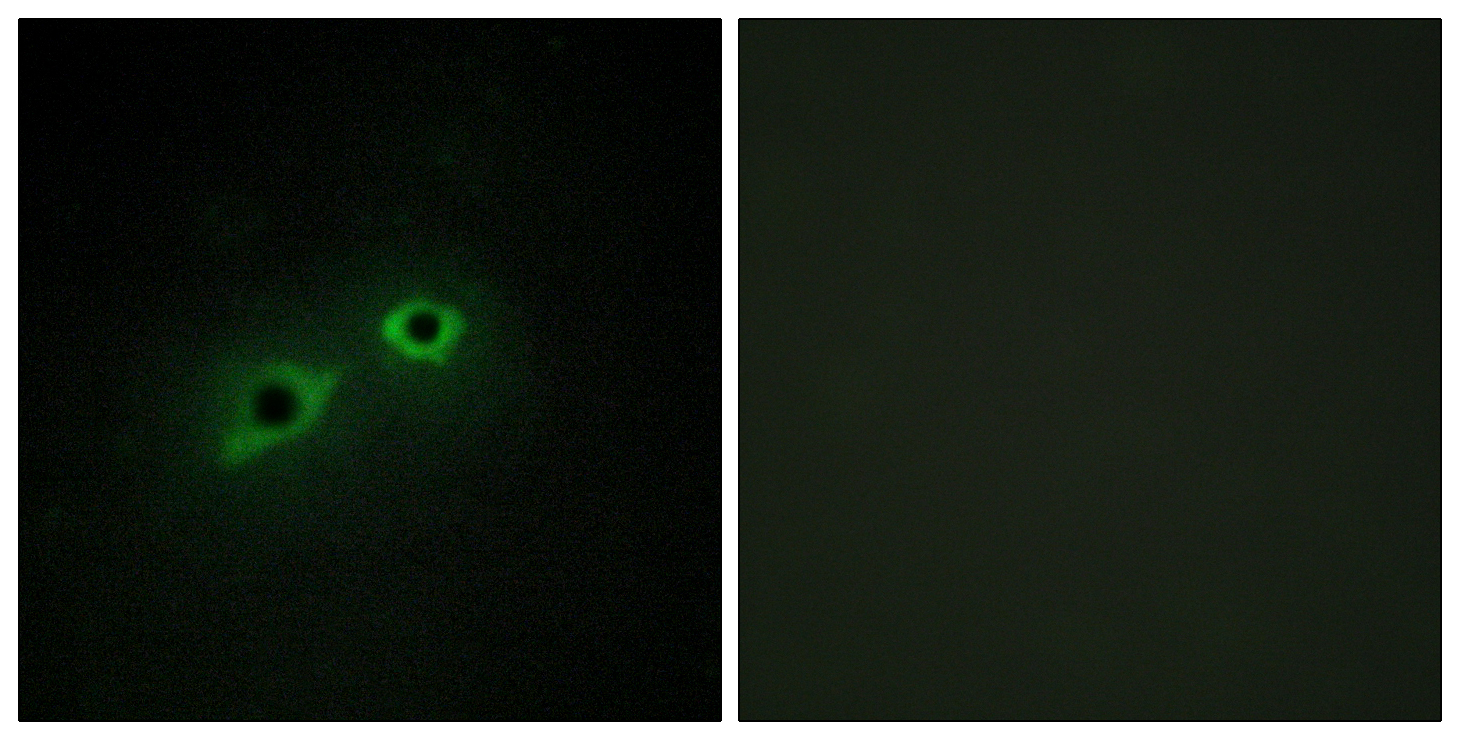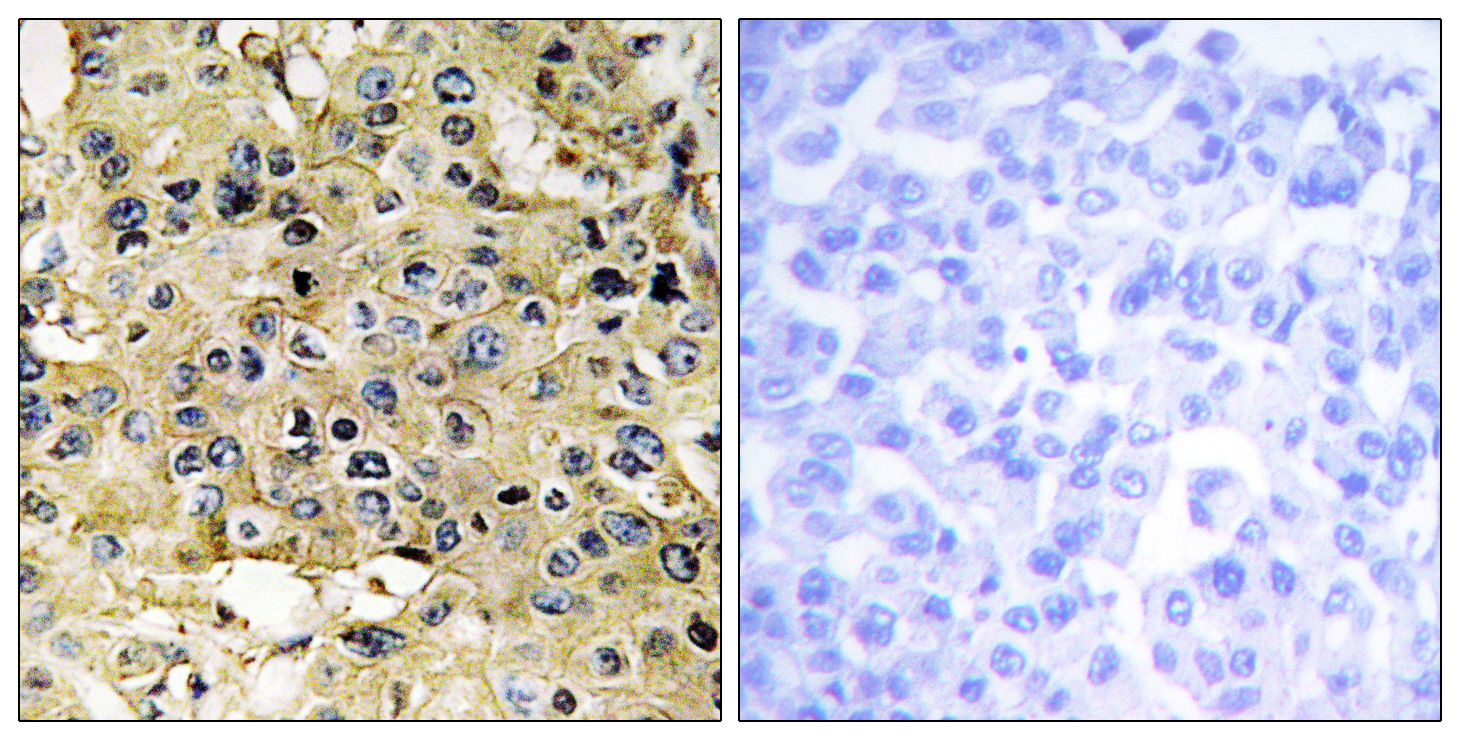Enterokinase HC Polyclonal Antibody
- Catalog No.:YT1562
- Applications:IHC;IF;ELISA
- Reactivity:Human;Mouse
- Target:
- Enterokinase HC
- Gene Name:
- TMPRSS15
- Protein Name:
- Enteropeptidase
- Human Gene Id:
- 5651
- Human Swiss Prot No:
- P98073
- Mouse Swiss Prot No:
- P97435
- Immunogen:
- The antiserum was produced against synthesized peptide derived from human ENTK. AA range:81-130
- Specificity:
- Enterokinase HC Polyclonal Antibody detects endogenous levels of Enterokinase HC protein.
- Formulation:
- Liquid in PBS containing 50% glycerol, 0.5% BSA and 0.02% sodium azide.
- Source:
- Polyclonal, Rabbit,IgG
- Dilution:
- IHC 1:100 - 1:300. IF 1:200 - 1:1000. ELISA: 1:20000. Not yet tested in other applications.
- Purification:
- The antibody was affinity-purified from rabbit antiserum by affinity-chromatography using epitope-specific immunogen.
- Concentration:
- 1 mg/ml
- Storage Stability:
- -15°C to -25°C/1 year(Do not lower than -25°C)
- Other Name:
- TMPRSS15;ENTK;PRSS7;Enteropeptidase;Enterokinase;Serine protease 7;Transmembrane protease serine 15
- Molecular Weight(Da):
- 113kD
- Background:
- This gene encodes an enzyme that converts the pancreatic proenzyme trypsinogen to trypsin, which activates other proenzymes including chymotrypsinogen and procarboxypeptidases. The precursor protein is cleaved into two chains that form a heterodimer linked by a disulfide bond. This protein is a member of the trypsin family of peptidases. Mutations in this gene cause enterokinase deficiency, a malabsorption disorder characterized by diarrhea and failure to thrive. [provided by RefSeq, Jul 2008],
- Function:
- catalytic activity:Activation of trypsinogen by selective cleavage of 6-Lys-|-Ile-7 bond.,disease:Defects in PRSS7 are a cause of enterokinase deficiency [MIM:226200]; a life-threatening intestinal malabsorption disorder characterized by diarrhea and failure to thrive.,function:Responsible for initiating activation of pancreatic proteolytic proenzymes (trypsin, chymotrypsin and carboxypeptidase A). It catalyzes the conversion of trypsinogen to trypsin which in turn activates other proenzymes including chymotrypsinogen, procarboxypeptidases, and proelastases.,PTM:The chains are derived from a single precursor that is cleaved by a trypsin-like protease.,similarity:Belongs to the peptidase S1 family.,similarity:Contains 1 MAM domain.,similarity:Contains 1 peptidase S1 domain.,similarity:Contains 1 SEA domain.,similarity:Contains 1 SRCR domain.,similarity:Contains 2 CUB domains.,similarity:C
- Subcellular Location:
- Membrane ; Single-pass type II membrane protein .
- Expression:
- Intestinal brush border.
- June 19-2018
- WESTERN IMMUNOBLOTTING PROTOCOL
- June 19-2018
- IMMUNOHISTOCHEMISTRY-PARAFFIN PROTOCOL
- June 19-2018
- IMMUNOFLUORESCENCE PROTOCOL
- September 08-2020
- FLOW-CYTOMEYRT-PROTOCOL
- May 20-2022
- Cell-Based ELISA│解您多样本WB检测之困扰
- July 13-2018
- CELL-BASED-ELISA-PROTOCOL-FOR-ACETYL-PROTEIN
- July 13-2018
- CELL-BASED-ELISA-PROTOCOL-FOR-PHOSPHO-PROTEIN
- July 13-2018
- Antibody-FAQs
- Products Images

- Immunofluorescence analysis of HepG2 cells, using ENTK Antibody. The picture on the right is blocked with the synthesized peptide.

- Immunohistochemistry analysis of paraffin-embedded human breast carcinoma tissue, using ENTK Antibody. The picture on the right is blocked with the synthesized peptide.



